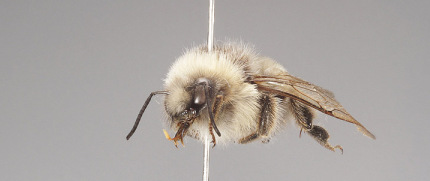Learning outside the school in the Museum
Deutsches Technikmuseum Berlin

Konrad Zuse Internet Archive: 360° Object-Panorama of the Z1
Konrad Zuse's Z1 computer of the year 1937 was destroyed in world war II. A replica of the mechanic computer is exhibited in Berlin's Deutsches Technik Museum. The Konrad Zuse Internet Archiv has taken on the task to make the inheritence of Konrad Zuse accessible to the public. On the web page you can browse through Konrad Zuse's drawings and learn about the inner workings of the Z1 with the help of 3D animations. Together with computer scientists of the AG Rojas, the TET-team has produced a 360° object panorama of the Z1. Over 750 high-definition pictures give insights into the fascinating architecture of the Z1 and one can appreciate the kind of detailed work done by Konrad Zuse.
Naturkundemuseum Berlin
Digitized Bumblebee as revolvable 360°- Object
Together with the Naturkundemuseum Berlin we develop automated production techniques to provide high-definition (HD, stereo-3D) fotorealistic displays for the museums zoological collection. These can be interactively rotated to make them visible from all angles. The primary use for such digitized products might be scientific research. For us, an important aspect regarding these productions is the option for multi-use by making them available on our universal media platform (IMPAL) as component for the tet.folio and for other web applications as well as for exhibitions.
Berlin Zeiss Planetarium

The Planetarium-Projector as interactive media element of the tet.folio
The Zeiss Planetarium Berlin offers a wide variety of educational programs in the fascinating context of astronomy. As part of the TET-project we develop interactive media modules in which celestial phenomena and relations can be experienced through the use of a virtual planetarium projector. The technology underlying the planetarium becomes interesting as well because the "Cosmorama" projector, which is the last device of this kind, will end its service in the near future. Interactive projections and public displays from the Zeiss Planetarium, that can be controlled by panels or smart phones, then become living documents of the history of technology.
Science Center Spectrum

Virtual Experimenting Station for the Science Center
For the Science Center Spectrum the TET project implements two stations that show more than would be possible in a real experiments. In the first exhibit one can open the star projector from the Zeiss Planetarium and learn how the stars are projected on the artificial sky. In the second exhibit, the visitor can observe the refraction of light by a prism for various light colors. The light for this experiment, as well as all instructions, explanations and animations that help explain the observed phenomena are projected directly onto the table surface by our tet.table projector that also enables gesture control of the station. This second exhibit exemplary shows one of many possible scenarios in which the tet.table can facilitate experimenting.




